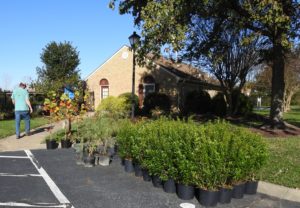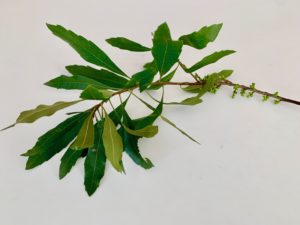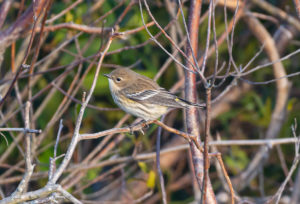
by Mary Reid Barrow
Aromatic wax myrtle tree is one of 100 trees of various species that LRNow is giving away tomorrow (Saturday, Nov. 7) to homeowners in the Ocean Lakes neighborhood.
The tree giveaway is just one piece of a larger infusion of trees into Ocean Lakes this weekend. LRNow also will be planting almost six area of trees the low lying neighborhood’s common areas.
Come out, visit with us, sniff the leaves of a wax myrtle and see the other trees going to their new homes. We’ll be on hand between 10 a.m. and 2 p.m. tomorrow in DaVinci Park, 1703 DaVinci Drive in Ocean Lakes, and we will tell you about our hopes for planting more trees across Virginia Beach.
Visit our tree table and see our hand-crafted tree bracelets. We are giving the bracelets to anyone who donates $20 or more to our Kenneth Greif Tree Fund to help us continue to plant trees throughout the city.
You also can sign up for a LRNow Pearl Home flag and get a scoop the poop scarf for your pup tomorrow. But the day really is all about trees.
Wax myrtle is just one of several species that do well in damp soil that we are giving to Ocean Lakes homeowners or planting in the neighborhood common areas. Pawpaw trees, fringe trees and redbuds are among the smaller trees. Larger trees include several species of oak, black gums, sycamores and bald cypress. Trees are a natural defense against flooding and will be an important part of Virginia Beach’s fight against sea level rise and climate change.
Wax myrtle is the one tree that is both being given to homeowners and being planted in the common areas. These coastal natives will grow in clay, loam and sand and will do well in tidal and non-tidal fresh and brackish marshes, swamps, sand dune swales and even upland woods, say LRNow’s planting instructions..
It’s a fun tree for the homeowner because it holds its leaves all winter and because of of its appeal to wildlife. The hard little green berries growing along the stems of the female trees will soon become blueish-white as the weather cools:

But the berries don’t grow any softer as they ripen. Still, these tough little BB’s are a great source of food for some winter birds with cast-iron stomachs, like yellow-rumped warblers:

Through the winter you will see these little warblers flying in and out of stands of wax myrtle. Unlike their fellow warbler species, yellow-rumps don’t have to fly south in winter because they can feast on wax myrtle berries in cold weather when insects are hard to come by.
If you are like me, you aren’t sure what the difference is between the wax myrtle and the very similar bayberry. Experts say they are hard to tell them apart. I have read that bayberry grows only as far south as Virginia and wax myrtle is sometimes called southern bayberry, because it grows here as well as much further south.
But it doesn’t matter a lot. Bot trees like the same growing conditions. Crush their leaves and both smell like bayberry candles and don’t tell a yellow-rumped warbler to choose between them.
By any name, wax myrtle is a great tree to have in Ocean Lakes or anywhere in Virginia Beach.